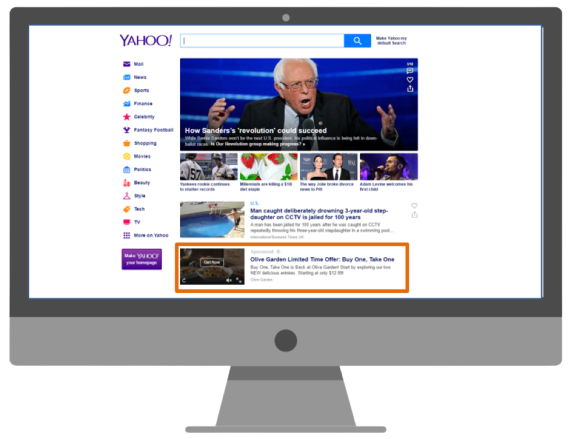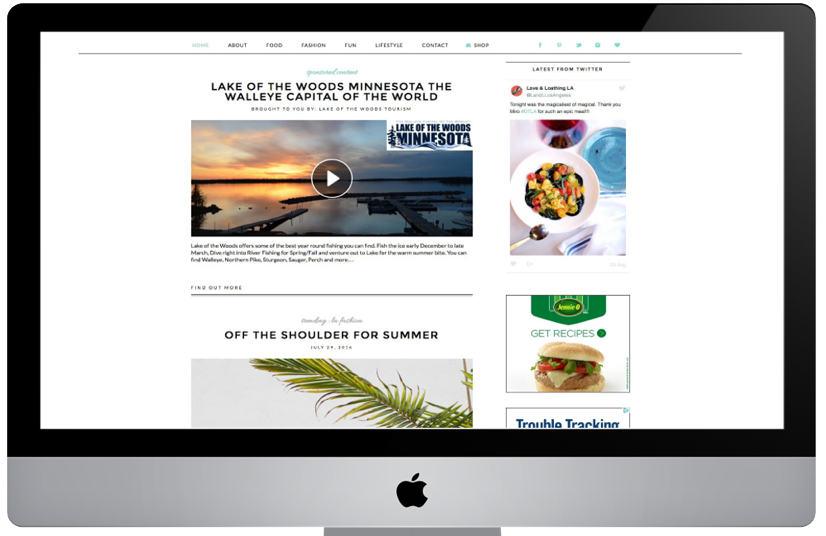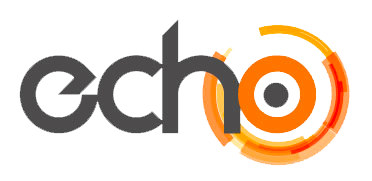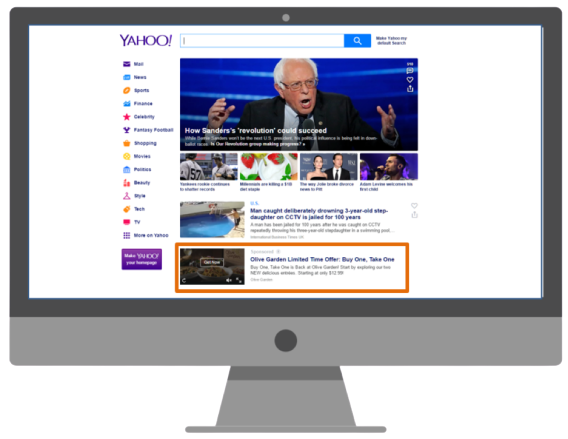Native Advertising is strategically targeted advertising that takes on the natural appearance and function of the platform on which it is found. In layman’s terms, it is advertising that camouflages itself to blend in as organic publisher content. Quality native advertising is nearly indistinguishable from the organic content, with the exception of the “sponsored” watermark that must appear.
Native advertising can be found on nearly any website commonly visited today. For example, if you view legendary news and email site, Yahoo.com, the “sponsored” native ads begin as few as two links down on their story board.

Native advertising targets audiences by using contextual information gained by tracking audience behaviors. An advertisement about visiting the Bahamas will not appear for a consumer whom has been searching for discount ski lodging. Instead, the snow skiing enthusiast will receive content related to their passion for skiing. Additionally, this content will look like it belongs on the page organically and engage them in a natural and non-intrusive way. This is how we arrive at the term, native.
Native advertising accomplishes numerous goals for marketers. Tracking consumer behavior yields a high degree of accuracy, such that the consumer has already demonstrated a desire to engage with the type of content they’re being driven to. This is achieved through cookie and other aggregated data metrics. Think of it as leading a horse to water by driving their traffic, and then choosing what water is in the bucket they’re lead to.
Native video advertising is currently on the forefront of industry trends. By now it is no secret to anyone in the industry that video does as much for branding as it does for awareness. As such, native video advertising is a very potent branding tool. Ultimately accomplishing two vital marketing goals in one stroke by combining written editorial headlines and descriptions along with a video player all within the same ad unit to both raise brand awareness and engage consumers to encourage click-throughs.

As one can likely infer by this point, Native advertising is phenomenal at driving traffic and engaging consumers better than other forms of tradition and digital advertising. Consumers are in a different mindset when they click on a native advertisement compared to banner ads and video placements. Many consumers see the native ads as part of the publisher editorial and are more inclined to click on these ads and continue on to the advertiser messaging. A native piece that is minimally invasive to the user experience and showcases content that is relevant to the consumer, it encourages thoughtful engagement with the content and brand messaging. This result is consistent with regard to both increased traffic to the advertiser site as well as revenue generation and brand lift.
However, this increased performance is dependent on a few key related factors; namely the quality of the landing page and quality of the ad creative. Even with the most cutting edge ad serving techniques available to us, a poor ad is a poor ad. No amount of traffic driving and demand generation can offset a piece of creative that doesn’t engage the audience on some fundamental level. Similarly, if the landing page is clunky and cluttered, then user engagement will begin and end with clicking the ad then bouncing off page. A pleasing aesthetic and enjoyable user experience is still the cornerstone of any demand generating effort.
Native advertising is comprehensive, and utilizes several ad units to accomplish its goals. In fact, The Interactive Advertising Bureau (IAB) identifies six core types of ad unit that qualify as native advertising.
- In-Feed Units- In feed ad units are placements vary in their execution, but largely refer to ads that are placed in a publisher’s feed with an organic aesthetic. The variation may occur in whether or not the ad plays automatically, leads to an offsite landing page when engaged, or continually plays while leading to an offsite branding page.

- Search Ads- Search ads are placed around organic search engine results based on the key phrases searched. These can often be found at the top of bottom of a search engine results page and should be relevant to the search inquiry.
- Recommendation Widgets- Recommendation widgets differ in that they do not follow the aesthetic form of the site on which they appear. Additionally, their sale is not with a guaranteed placement, they will appear on potentially hundreds of publisher sites. Recommendation widgets are easily identified by disclosures such as “You May Also Like” or “Sponsored Headlines”.

- Promoted Listings- Promoted Listings are a solution utilized when the site does not exhibit traditional editorial content, such as an ecommerce page (i.e. Amazon.com). However, they are still designed to blend seamlessly into the user experience and often link to a product page. Promoted listing are contextually targeted, meaning they are placed using behavioral trends collected through consumer data.

- In-Ad- In ad listing is placed outside of the editorial well, is contextually relevant, links to an offsite page, and is sold with the guaranteed placement. In-Ad advertisements are measured through engagement, and are very specifically targeted. It is due to this robust simplicity that this type of unit is referred to as the “Internet Advertising Bureau Standard”.
- Custom/Can’t be Contained- The Custom ad unit category allows for platform specific advertising that doesn’t necessarily warrant its own category. However, these specific approaches are still relevant to marketers. One example of this uniquely tailored approach would be custom playlists on music streaming sites. The common thread between all custom ad units is that they are unique to the individual site on which they appear.
Native advertising is currently among the best techniques available to marketers both in terms of accurate targeting, engagement, branding, and revenue generation. While no marketing solution is a silver bullet for all the issues facing the industry today, native is a powerful tool worth considering. Orange142 has a proprietary technique to deliver advertiser content to the target audience called Echo.

Echo uses a combination of in-feed and recommendation native as well as display advertising to engage a new audience with content that speaks to their interests. Echo drives traffic to specific content or landing pages by using display and native advertisements simultaneously to complement one another. Not only does Echo’s usage of custom imagery and headline create a significantly higher time on page than traditional online advertisement, but it does so affordably. Echo runs on a cost per click model, meaning that the advertiser only pays for the ad when a consumer engages and comes to their site.
Regardless of which specific tool an advertiser may choose to employ in meeting their campaign goals, one thing is clear, to be competitive, an investment in digital advertising is absolutely necessary. While Native ads need not be your only digital advertising solution, a well-informed advertiser would be hard pressed not to incorporate native as a piece of their digital strategy.





